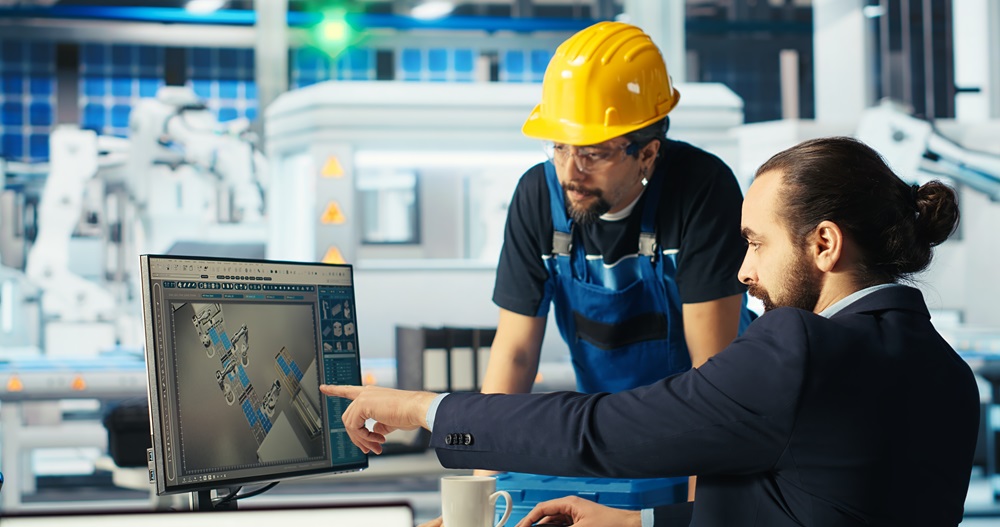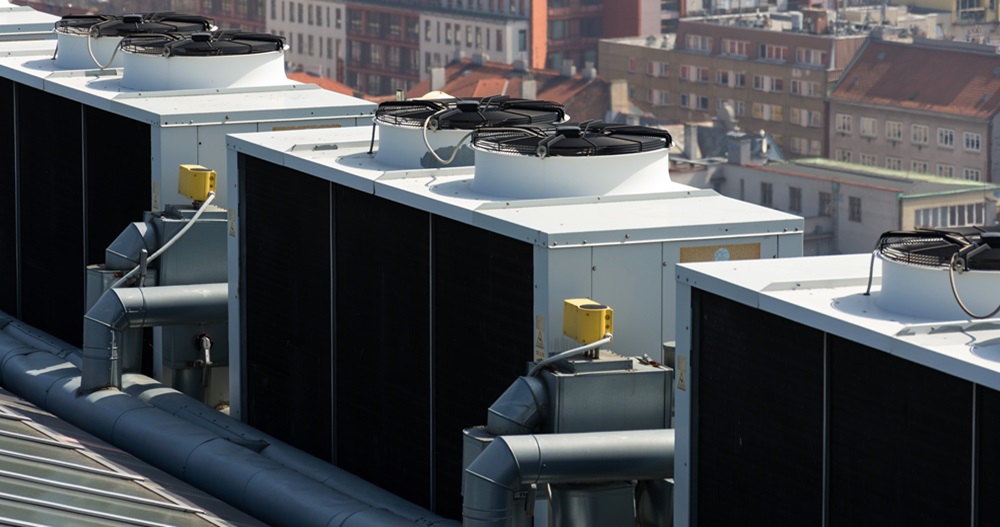How Inverter and Intelligent Control Systems Optimize Energy

1. Introduction: The New Era of Smart Climate Control
As buildings become more complex and energy regulations more stringent, traditional HVAC systems are being replaced by smarter, adaptive technologies. Among these, Variable Refrigerant Flow (VRF) systems have emerged as one of the most efficient and versatile solutions for climate control in both residential and commercial settings.
The AeroCoil AC-V Pro series represents the cutting edge of this evolution — combining advanced DC inverter compressors and intelligent control algorithms to deliver unmatched precision, comfort, and energy efficiency. But what’s happening behind the scenes that makes this technology so effective? Let’s explore the science that drives it.
2. Understanding VRF Technology
At its core, VRF (Variable Refrigerant Flow) technology allows a single outdoor unit to control multiple indoor units by adjusting the flow of refrigerant based on real-time demand.
Instead of turning compressors fully on or off (as traditional HVAC systems do), VRF systems modulate the refrigerant flow rate to meet the exact thermal load required by each zone.
This approach delivers:
Precise temperature control for every room or floor.
Reduced energy waste from frequent start-stop cycles.
Simultaneous heating and cooling in different areas (in advanced configurations).
The result: improved comfort, higher energy savings, and greater operational flexibility.
3. The Role of DC Inverter Compressors
One of the main technological pillars of AeroCoil’s AC-V Pro system is its DC inverter compressor. Unlike traditional fixed-speed compressors, inverter units can continuously vary their speed to match cooling or heating demands.
Here’s how it works:
When demand is low, the compressor runs at a lower frequency, consuming far less power.
When demand increases (e.g., during peak summer hours), it ramps up seamlessly without drawing excessive current.
Because the compressor rarely stops completely, it avoids the high inrush currents that cause energy spikes in conventional systems.
Technical benefits:
Up to 40% reduction in energy consumption.
Smoother temperature regulation with minimal fluctuations (±0.5 °C).
Less mechanical stress → longer compressor lifespan.
This inverter-driven adaptability is key to the “variable” nature of VRF — optimizing both performance and efficiency across diverse building loads.
4. Intelligent Control Algorithms: The Hidden Brain
While inverter hardware provides flexibility, the real magic lies in the intelligent control logic behind it. The AeroCoil AC-V Pro system employs advanced microprocessors and sensors that continuously monitor variables like:
Indoor and outdoor temperatures
Pressure differentials
Real-time refrigerant flow
Occupancy patterns
These data points feed into algorithms that dynamically adjust compressor frequency, expansion valve position, and fan speeds across zones.
Key advantages of AeroCoil’s intelligent control system:
Adaptive optimization: Constantly learns load behavior and fine-tunes energy output.
Load balancing: Distributes capacity efficiently across up to 64 indoor units.
Predictive maintenance: Detects anomalies early using online diagnostics.
Central management: Integrates easily with Building Management Systems (BMS) or cloud-based dashboards.
Essentially, the control software acts as the “brain” of the system — ensuring that energy use is precisely matched to demand, minute by minute.
5. Part-Load Efficiency: The Real Energy Saver
Most HVAC systems operate under part-load conditions (less than full capacity) for the majority of the year.
Traditional on/off systems perform poorly in this mode because compressors frequently cycle, wasting energy and shortening component life.
VRF systems, by contrast, shine in part-load performance. AeroCoil’s AC-V Pro maintains exceptionally high COP (Coefficient of Performance) and EER (Energy Efficiency Ratio) values even at reduced loads.
Example scenario:
A 10-story mixed-use
building with only partial occupancy on weekends.
The AeroCoil system automatically reduces compressor output and refrigerant flow to match that reduced demand.
Result: up to 35% less electricity usage compared to conventional split systems.
This ability to modulate capacity based on real-world usage is the cornerstone of VRF’s superior energy performance.
6. System Integration and Smart Connectivity
In the age of smart buildings, VRF systems must integrate seamlessly with automation and IoT platforms.
The AeroCoil AC-V Pro supports multiple levels of connectivity:
Wireless communication: Room controllers with intuitive interfaces for end-users.
Online monitoring: Cloud-based diagnostics and energy reporting for facility managers.
Centralized control systems: Enable multi-zone scheduling and remote adjustments.
Such connectivity not only simplifies management but also enables data-driven energy optimization, ensuring that the system runs at peak efficiency year-round.
7. Environmental and Sustainability Impact
By combining inverter technology and intelligent controls, VRF systems contribute significantly to green building goals:
Lower CO₂ emissions: Direct result of reduced electricity demand.
Less refrigerant leakage: Optimized piping pressure and flow control.
Compatibility with eco-friendly refrigerants (R32/R410A): Reduces global warming potential (GWP).
Support for LEED and BREEAM certifications: Due to proven energy efficiency metrics.
In short, AeroCoil VRF systems not only save energy but also align with global sustainability standards, helping developers meet ESG (Environmental, Social, Governance) targets.
8. Future Trends: From Smart to Autonomous HVAC
The next wave of HVAC innovation is about autonomy — systems that don’t just respond but anticipate.
AeroCoil’s research and development roadmap includes:
AI-driven optimization, where algorithms learn building behavior patterns.
Integration with renewable energy sources (e.g., solar-powered VRF modules).
Predictive analytics that can forecast demand and adjust ahead of time.
Such advancements promise to further enhance operational reliability, user comfort, and sustainability in large-scale projects.
9. Conclusion: Engineering Precision Meets Intelligent Efficiency
The efficiency of AeroCoil’s AC-V Pro VRF systems isn’t accidental — it’s the outcome of precise engineering and intelligent control working in harmony.
By combining inverter-driven modulation with adaptive algorithms, these systems deliver energy optimization that is dynamic, measurable, and future-ready.
Whether installed in a single home, a corporate headquarters, or a mixed-use high-rise, AeroCoil VRF technology exemplifies what’s possible when HVAC design embraces both science and intelligence.


